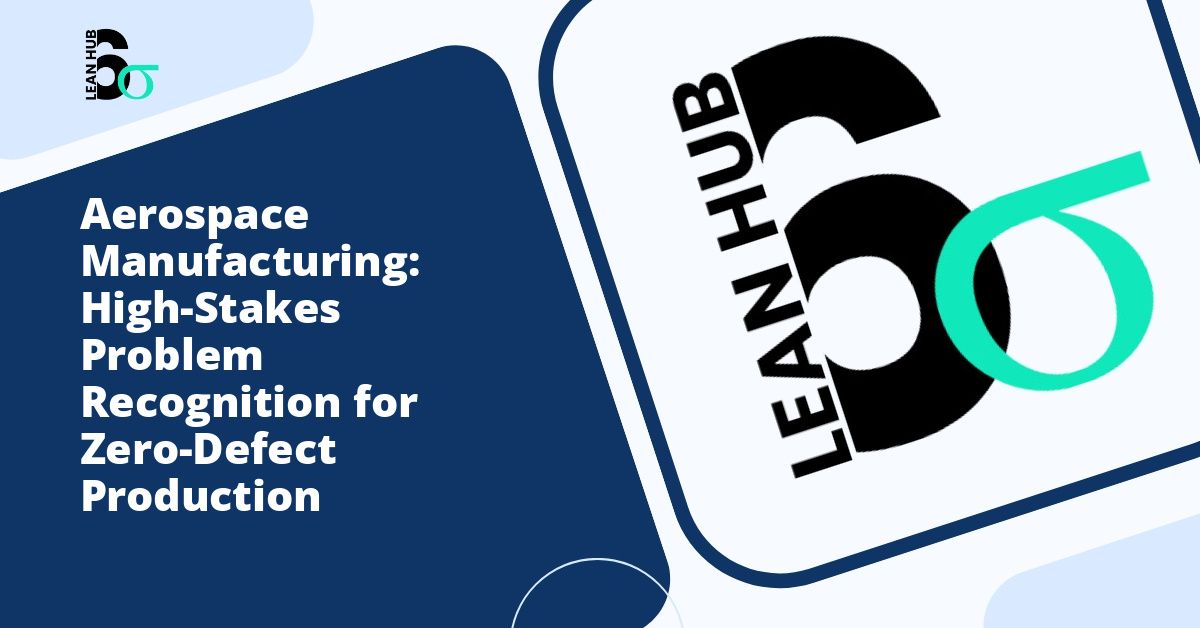In today’s rapidly evolving business landscape, organizations are constantly seeking methodologies that deliver both speed and quality. The integration of Agile and Six Sigma has emerged as a powerful hybrid approach that combines the flexibility of iterative development with the rigor of data-driven problem-solving. At the heart of this integration lies a critical capability: effective problem recognition. Understanding how to identify and define problems within this hybrid framework can make the difference between project success and failure.
Understanding the Hybrid Methodology Landscape
Before diving into problem recognition, it is essential to understand what each methodology brings to the table. Agile methodology focuses on iterative development, customer collaboration, and responding to change. It thrives in environments where requirements evolve and rapid delivery is paramount. Six Sigma, on the other hand, is a disciplined, data-driven approach for eliminating defects and reducing variation in processes. It follows a structured path through phases known as DMAIC: Define, Measure, Analyze, Improve, and Control. You might also enjoy reading about How to Get Buy-In for Your Six Sigma Project During the Recognize Phase.
When these methodologies merge, organizations gain the agility to respond quickly to market changes while maintaining the quality standards that Six Sigma demands. This hybrid approach is particularly valuable in complex projects where both innovation and precision are required. You might also enjoy reading about What is the Recognize Phase in Lean Six Sigma? A Complete Guide for Beginners.
The Critical Role of Problem Recognition
Problem recognition serves as the foundation for any improvement initiative. In hybrid methodologies, this phase becomes even more crucial because it must satisfy the requirements of both frameworks. Poor problem recognition leads to wasted resources, misaligned efforts, and solutions that fail to address root causes. You might also enjoy reading about Combining Design Thinking with the Recognize Phase for Innovation Success.
The recognize phase in lean six sigma implementations represents the initial step where organizations identify opportunities for improvement. This phase requires a delicate balance between Agile’s emphasis on customer feedback and Six Sigma’s focus on measurable defects and process variations. Teams must be skilled at spotting problems that are both significant enough to warrant structured problem-solving and flexible enough to accommodate iterative refinement.
Key Elements of Effective Problem Recognition
Data-Driven Observation
In the hybrid methodology context, problem recognition begins with collecting both quantitative and qualitative data. Six Sigma practitioners excel at gathering metrics, process performance data, and statistical evidence. Agile teams contribute through customer feedback, user stories, and sprint retrospectives. The combination of these data sources provides a comprehensive view of where problems exist.
Organizations should establish mechanisms for continuous data collection that feed into both frameworks. This might include automated dashboards that track process metrics alongside customer satisfaction scores and team velocity measurements. The key is ensuring that data flows seamlessly between Agile iterations and Six Sigma analysis cycles.
Stakeholder Engagement
Both Agile and Six Sigma emphasize stakeholder involvement, though they approach it differently. Agile promotes continuous customer collaboration throughout development cycles, while Six Sigma involves stakeholders primarily during the Define phase to establish project scope and goals.
In a hybrid approach, problem recognition must engage stakeholders early and often. This means conducting regular sessions where business leaders, process owners, customers, and team members collaboratively identify pain points. These sessions should use Agile techniques like user story mapping combined with Six Sigma tools such as SIPOC diagrams (Suppliers, Inputs, Process, Outputs, Customers) to create a shared understanding of problems.
Prioritization Frameworks
Not all problems deserve equal attention. Hybrid methodologies require sophisticated prioritization that considers multiple factors: business value, customer impact, technical feasibility, and potential for measurable improvement. Agile teams typically use value-based prioritization, while lean six sigma projects focus on financial impact and defect reduction potential.
Effective problem recognition in hybrid environments employs multi-criteria decision matrices that weigh both Agile and Six Sigma priorities. Teams might assess problems based on criteria such as return on investment, alignment with strategic goals, customer satisfaction impact, defect rates, and implementation complexity. This comprehensive evaluation ensures that recognized problems are worth solving through either or both methodologies.
Practical Techniques for Problem Recognition
Gemba Walks with Agile Principles
Gemba walks, a lean manufacturing technique where leaders observe work at the actual place it happens, can be enhanced with Agile principles. Rather than one-time observation events, teams can conduct regular, lightweight gemba sessions integrated into sprint cycles. These sessions allow teams to recognize problems in real-time while maintaining Agile’s iterative rhythm.
During these walks, observers should look for waste (a Six Sigma concern) and impediments to flow (an Agile concern). The insights gathered feed directly into sprint planning and Six Sigma project selection processes.
Voice of Customer Integration
Both methodologies value customer input, making Voice of Customer (VOC) analysis a natural bridge between them. In problem recognition, VOC activities should capture both explicit customer complaints (Six Sigma focus) and emerging needs or desires (Agile focus).
Organizations can implement continuous VOC programs that include surveys, interviews, usage analytics, and social media monitoring. The data gathered should be analyzed using Six Sigma statistical tools while being fed into Agile product backlogs as user stories and acceptance criteria.
Process Mapping in Iterations
Traditional Six Sigma relies heavily on detailed process mapping to identify problems. In a hybrid approach, process mapping becomes an iterative activity. Teams create initial process maps quickly (aligned with Agile’s bias toward action), then refine them progressively as more information becomes available.
This iterative mapping helps recognize problems at different levels of detail across multiple sprints or iterations. Early iterations might reveal high-level bottlenecks, while subsequent cycles uncover subtle variations and defects that require Six Sigma rigor to resolve.
Common Challenges and Solutions
Cultural Resistance
Organizations often struggle when introducing hybrid methodologies because teams are entrenched in either Agile or Six Sigma cultures. Agile practitioners may view Six Sigma as too rigid, while Six Sigma experts might see Agile as lacking discipline.
The solution lies in education and gradual integration. Teams should understand that problem recognition benefits from both perspectives: Agile’s speed in identifying emerging issues and Six Sigma’s thoroughness in validating problem significance. Training programs that teach both methodologies and their integration points help break down cultural barriers.
Tool and Terminology Conflicts
Each methodology comes with its own toolkit and language. During problem recognition, this can create confusion. For example, Agile speaks of “impediments” while Six Sigma identifies “defects” or “variations.” These terms represent different problem types but sometimes overlap.
Organizations should develop a unified taxonomy that respects both methodologies while creating common ground. A problem classification system might categorize issues as process defects (Six Sigma territory), workflow impediments (Agile territory), or hybrid problems requiring both approaches.
Measuring Success in Problem Recognition
How do organizations know if their hybrid problem recognition efforts are effective? Success metrics should reflect both methodologies. From the Agile perspective, success might be measured by the velocity of problem identification and the percentage of recognized problems that lead to valuable backlog items. From the Six Sigma viewpoint, success includes the accuracy of problem statements, the correlation between recognized problems and measurable defects, and the financial impact of selected improvement projects.
Organizations implementing hybrid approaches should track leading indicators such as stakeholder engagement levels in problem identification sessions, time from problem recognition to action, and the balance between Agile-oriented and Six Sigma-oriented problems in the improvement pipeline.
Conclusion
The integration of Agile and Six Sigma creates a powerful hybrid methodology capable of addressing the dual demands of speed and quality. Effective problem recognition in this context requires organizations to thoughtfully blend the strengths of both approaches: Agile’s responsiveness and customer focus with Six Sigma’s analytical rigor and data-driven discipline.
By implementing comprehensive problem recognition practices that honor both methodologies, organizations position themselves to identify the right problems at the right time, allocate resources effectively, and deliver solutions that truly matter. As businesses continue to navigate increasingly complex challenges, mastering the recognize phase in lean six sigma implementations while maintaining Agile flexibility will become a defining competitive advantage.
The journey toward hybrid methodology excellence begins with seeing problems clearly. Organizations that invest in developing this capability will find themselves better equipped to drive meaningful improvements that satisfy both the need for rapid innovation and the demand for measurable, sustainable quality.








